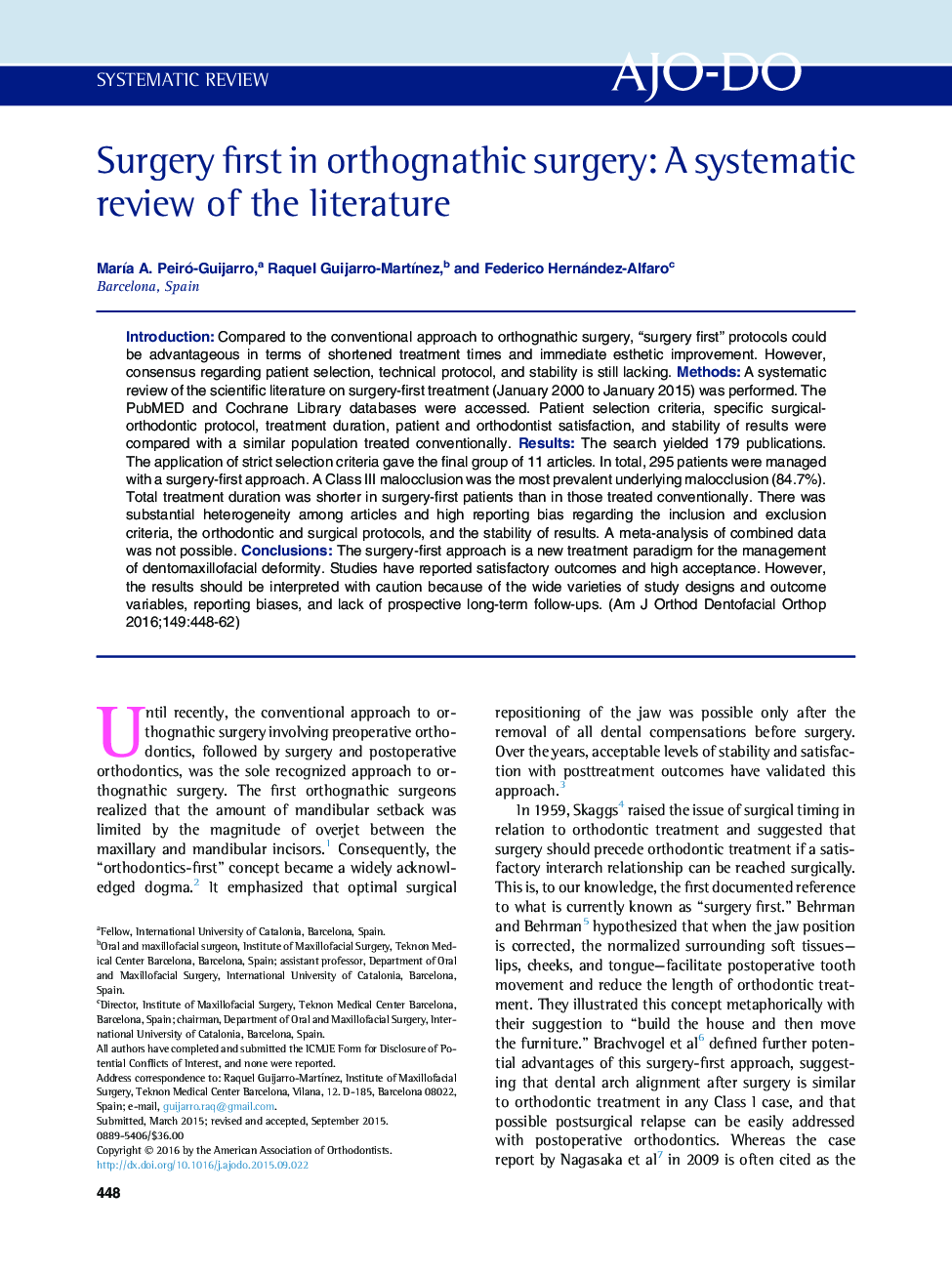| Article ID | Journal | Published Year | Pages | File Type |
|---|---|---|---|---|
| 3115476 | American Journal of Orthodontics and Dentofacial Orthopedics | 2016 | 15 Pages |
•Surgery first represents a new treatment concept for the management of dentomaxillofacial deformity.•Key reported advantages are total treatment reduction and immediate improvement of the deformity.•Compared to conventional protocols, an increased instability has not been found.•Consensus regarding orthodontic-surgical protocols and inclusion-exclusion criteria are lacking.•The heterogeneity and low evidence level of current studies precludes a meta-analysis.
IntroductionCompared to the conventional approach to orthognathic surgery, “surgery first” protocols could be advantageous in terms of shortened treatment times and immediate esthetic improvement. However, consensus regarding patient selection, technical protocol, and stability is still lacking.MethodsA systematic review of the scientific literature on surgery-first treatment (January 2000 to January 2015) was performed. The PubMED and Cochrane Library databases were accessed. Patient selection criteria, specific surgical-orthodontic protocol, treatment duration, patient and orthodontist satisfaction, and stability of results were compared with a similar population treated conventionally.ResultsThe search yielded 179 publications. The application of strict selection criteria gave the final group of 11 articles. In total, 295 patients were managed with a surgery-first approach. A Class III malocclusion was the most prevalent underlying malocclusion (84.7%). Total treatment duration was shorter in surgery-first patients than in those treated conventionally. There was substantial heterogeneity among articles and high reporting bias regarding the inclusion and exclusion criteria, the orthodontic and surgical protocols, and the stability of results. A meta-analysis of combined data was not possible.ConclusionsThe surgery-first approach is a new treatment paradigm for the management of dentomaxillofacial deformity. Studies have reported satisfactory outcomes and high acceptance. However, the results should be interpreted with caution because of the wide varieties of study designs and outcome variables, reporting biases, and lack of prospective long-term follow-ups.
